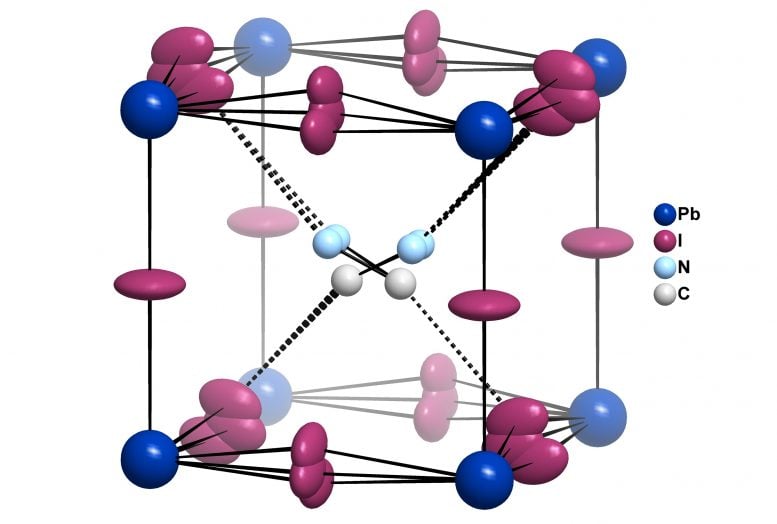
The drawing illustrates the interaction of the organic methylammonium cation (CH3NH3+) with the surrounding iodide ions. The shift of the iodide atoms out of the common plane with lead causes the breaking of the inversion symmetry. Credit: HZB
Using crystallographic analyses at the Diamond Light Source (DLS) synchrotron in the United Kingdom, an HZB team has demonstrated that hybrid halide perovskites crystallize without inversion center. Interactions between the organic molecules and adjacent iodine atoms can lead to the formation of ferroelectric domains, which, indirectly, can result in higher solar-cell efficiencies. The formation of these ferroelectric domains cannot occur in purely inorganic perovskites.
Solar cells based on perovskites have reached enormously high efficiencies within a few years, only. Those containing hybrid halide perovskite, i.e. materials containing inorganic and organic components, achieve particularly high efficiencies, but lack long-term stability, yet. Even though inorganic perovskite semiconductors, such as CsPbI3, are less efficient, they are considered interesting, as well, since they may overcome the stability issues of hybrid perovskites.
In-depth crystal structure analysis
Up to now, it was assumed that hybrid and purely inorganic perovskites do not differ fundamentally in their crystalline structure. When producing perovskite materials, it often occurs that no large single crystals are formed, but countless tiny twin crystals instead. This makes a crystal structure analysis particularly complicated and prone to errors and low precision.
An HZB team headed by Prof Susan Schorr and Dr. Joachim Breternitz has now achieved a breakthrough in understanding the crystalline structure of hybrid halide perovskites. The team investigated crystalline samples of methylammonium lead iodide (MAPbI3), the most prominent representative of this class of materials, at the Diamond Light Source synchrotron (DLS) in the United Kingdom using high-resolution single-crystal diffraction. This approach provided data for a more in-depth analysis of the crystalline structure of this material.
Ferroelectrical domains
They were also able to clarify, whether ferroelectric effects are possible at all in this hybrid halide perovskite. Ferroelectric domains can have favorable effects in solar cells and increase their efficiency. However, measuring this effect in samples is difficult – a null result can mean that there is either no ferroelectric effect or that the ferroelectric domains cancel one another’s effects out.
No inversion center in MAPbI3
“From a crystallographic point of view, some conditions are necessary for ferroelectricity: a ferroelectric effect can only occur if the crystal structure does not contain an inversion center, and additionally if it exhibits a permanent polar moment”, explains Breternitz.
Previously, it was assumed that the crystal structure of MAPbI3 did contain an inversion center. However, the results of the crystal structure analysis show this is not the case: “The organic methylammonium cation MA+ plays a major role in this”, explains Breternitz. This is because the MA molecule is not spherically symmetrical and is also considerably larger than a single atom, so it generates a polar moment with the adjacent iodine atoms. The occurrence of ferroelectric domains in MAPbI3 is therefore possible.
Fundamental difference between hybrid and inorganic perovskites
This mechanism is not applicable for inorganic perovskites incorporating an alkali atom instead of the MA molecule. That means the more stable inorganic perovskites may be somewhat more limited in their efficiency than their hybrid halide relatives.
The study is published in Angewandte Chemie.
###
Reference: “Role of the Iodide–Methylammonium Interaction in the Ferroelectricity of CH3NH3PbI3” by Dr. J. Breternitz, F. Lehmann, Dr. S. A. Barnett, Dr. H. Nowell and Prof. S. Schorr, 14 October 2019, Angewandte Chemie.
DOI: 10.1002/anie.201910599

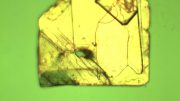
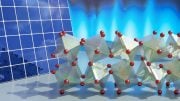
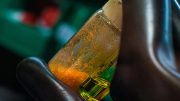
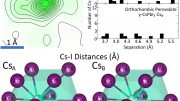

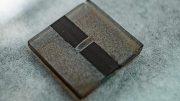
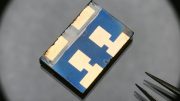
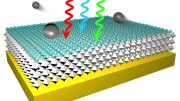
Be the first to comment on "Aspects of High Efficiency Perovskite Solar Cells Uncovered With Light 10 Billion Times Brighter Than the Sun"